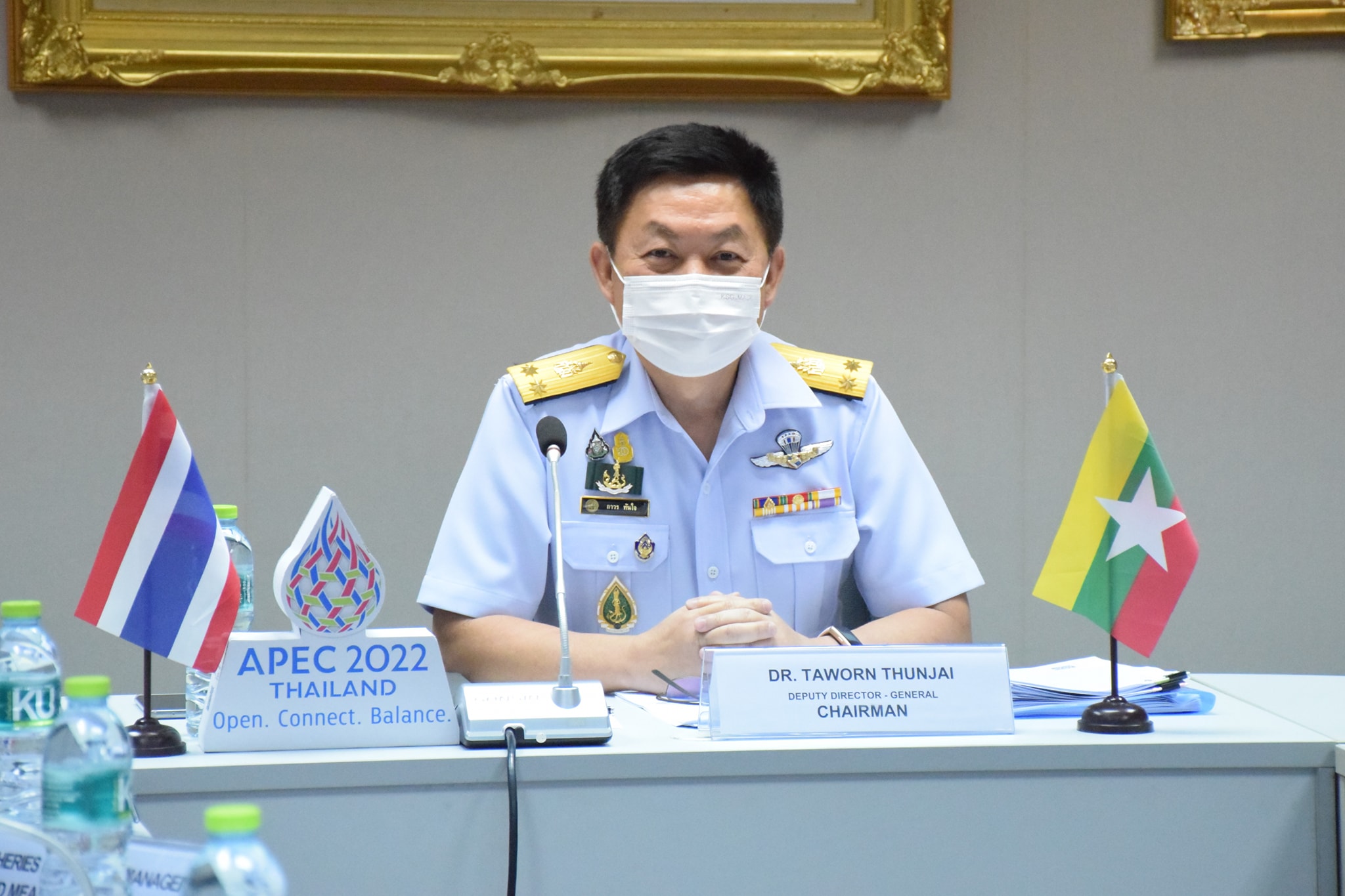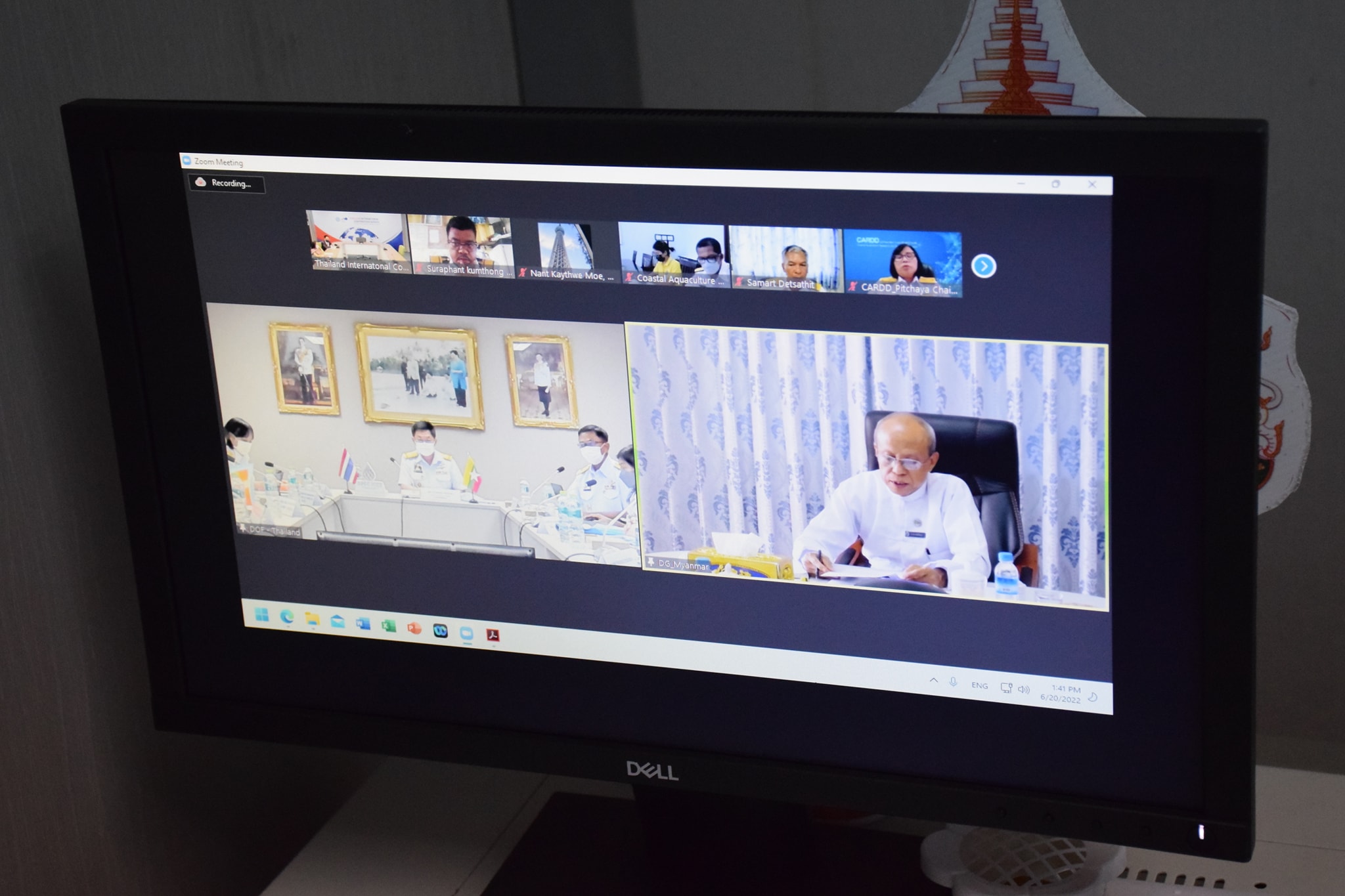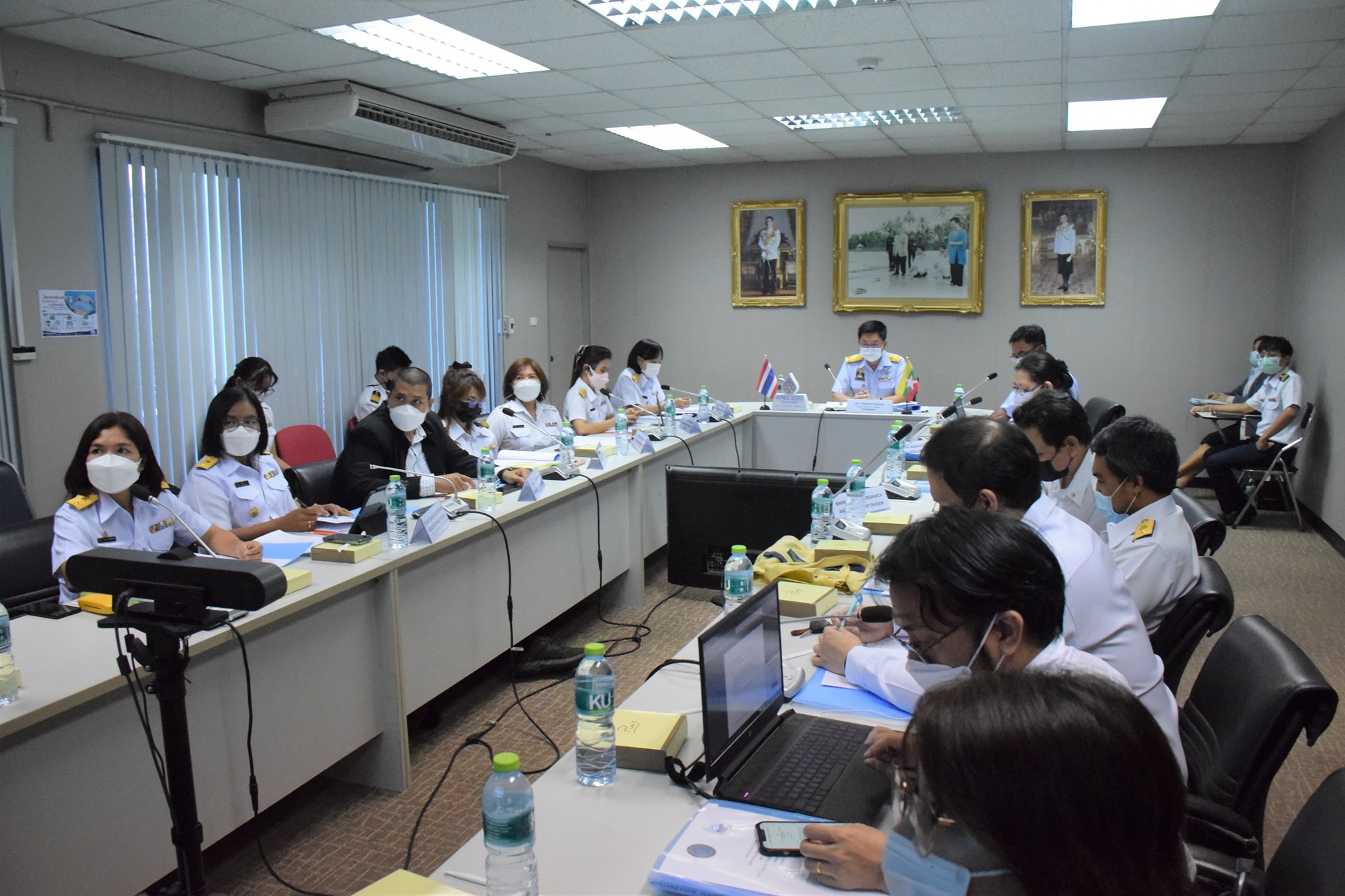Cooperation between Thailand and Myanmar under the Memorandum of Understanding on Fisheries



Cooperation between Thailand and Myanmar
under the Memorandum of Understanding on Fisheries
In 2017 Thailand and Myanmar established a Memorandum of Understanding on Fisheries Cooperation and this year Thailand hosted the 5th Meeting of the Joint Working Group between Thailand and Myanmar in virtual format on 20 June 2022. Both sides discussed ongoing cooperation activities that emerged from the 4th Meeting of the Joint Working Group between Thailand and Myanmar and how to strengthen fisheries cooperation in various areas, as follows:
1. Project under the Development Plan on Thai-Myanmar Cooperation, 3 years, funded and collaborated by the Thailand International Cooperation Agency (TICA)
1.1 The Project for the Development of Shrimp Farming Demonstration Center in Rakhine State: The Project has been established to improve the existing Shrimp Farming Demonstration Center in Sittwe, Rakhine State, as well as to develop activities to ensure the sustainability of the center such as laying down management measures of the center, disease control, and nursery pond management, including transferring knowledge to smart farmers in Rakhine State.
1.2 A Joint Research Project on Technology Development of Giant Butter Catfish and Hilsa Shad Cultivation
Giant Butter Catfish is a Myanmar native species with characteristics similar to Thai Gian Butter but larger in size. The wild population of Giant Butter is currently in a drastic decline, but it is still popular among Myanmar consumers, which causes its price to rise. Myanmar conducted research on Giant Butter Catfish culture in an earthen pond and presented the findings at the working group meeting. Myanmar is pleased to supply giant butter catfish fry to Thailand for further research to facilitate the development of giant butter catfish culture technology. The Department of Fisheries has set up a plan for the project’s activities implementation, which includes transporting fry for research and rearing them as broodstock for breeding in Thailand in accordance with the Institutional Biosafety Committee's procedures (IBC) of Thailand.
Hilsa Shad used to be mostly found in the Chao Praya River, and its population has been declining. Hilsa Shad is now extinct in the Chao Praya River, but it can occasionally be found in Songkhla Lake, and the Kra Buri River, there are also found in fresh markets in Bangkok and the south of Thailand. Hilsa Shad are originally from neighboring countries like Myanmar, Indonesia, and Malaysia. Although its flesh has a lot of bones, it is high in nutrients, and expensive as it is an endangered species. The Department of Fisheries conducted a survey and research on the biology of Hilsa Shad in three areas in Thailand: 1) Kra Buri River in Ranong Province, 2) Songkhla Lake in Songkhla Province, and 3) Pattani River in Pattani Province, to collect scientific data required for developing plans of culturing, breeding, and conservation. In the past Hilsa Shad used to be Myanmar's most exported freshwater fish, accounting for 15-20% of the world's captured Hilsa Shad (second only to Bangladesh, which can catch Hilsa Shad for 60% of the world’s catch). At the moment, Myanmar has fundamental information on the biology of Tenualosa ilisha, so Thailand has requested that information be exchanged and that Myanmar should conduct research alongside Thailand, as well as proposed a study on the best way to transport Hilsa Shad to Thailand.
2. Cooperation in preventing IUU fishing
The meeting exchanged information regarding transshipment ships flying the flag of Myanmar that was berthed in a Thai port. The Myanmar side was requested to take into account providing the Thai side with the list and details of the transshipment vessels that are granted with an annual license for inspection under the Port State Measures (PSM). The Myanmar side was also invited to join the ASEAN Network for Combating IUU Fishing Interactive Platform (AN-IUU Interactive Platform) to exchange and share information and to strengthen regional cooperation in the fight against IUU fishing that the Myanmar side is pleased to support.
3. Proposal for transferring the status of Siamese crocodile from List of Appendix 1 to List of Appendix 2 of the CITES
The Department of Fisheries submitted to the CITES Secretariat the complete proposal for the transfer of the status of Siamese crocodile from List of Appendix 1 to List of Appendix 2 of the CITES for presentation at the 19th CITES meeting to be held in November 2022. If the Thai proposal is adopted, the Siamese crocodile market will be expanded and will lead to the professional development of crocodile farmers in Thailand. Thailand is pleased to provide additional data to Myanmar for consideration in support of the Thai proposal to transfer the status of Siamese crocodiles.

